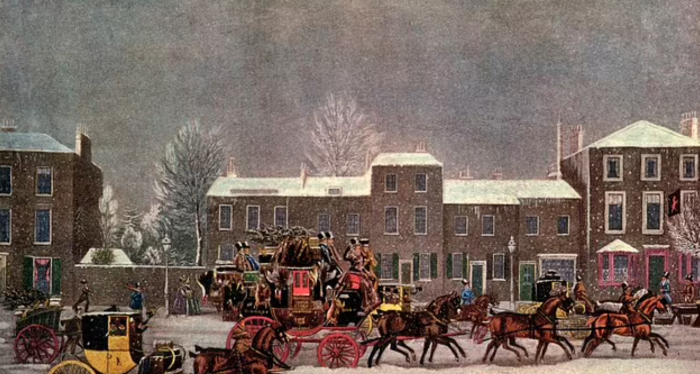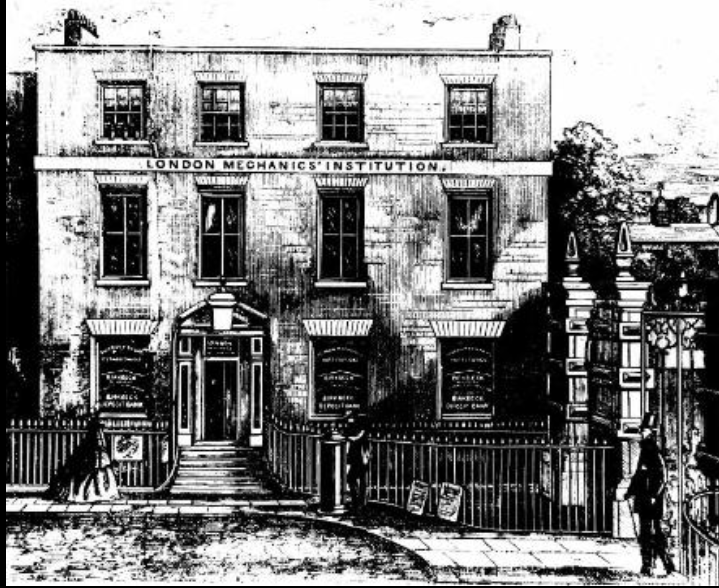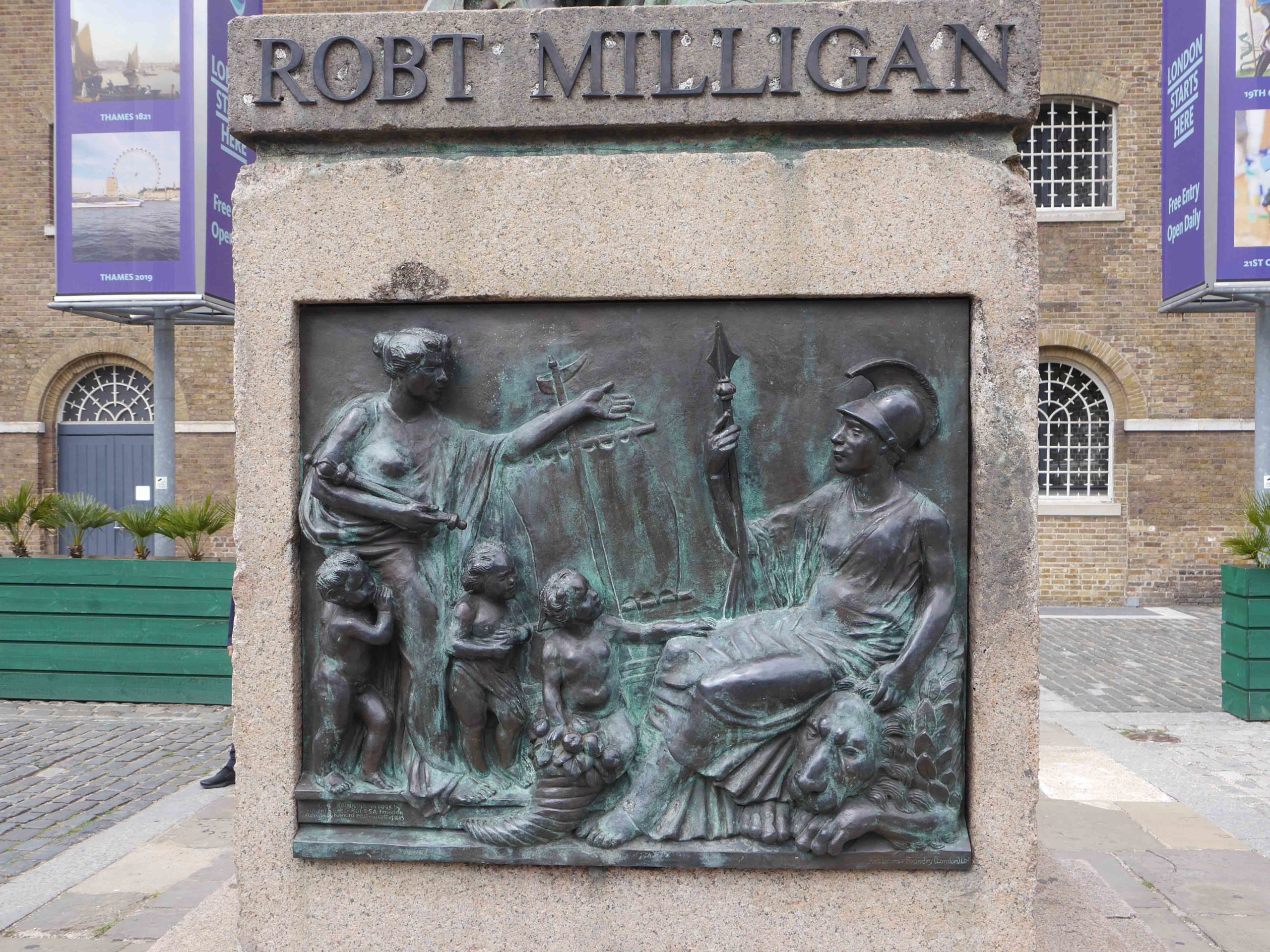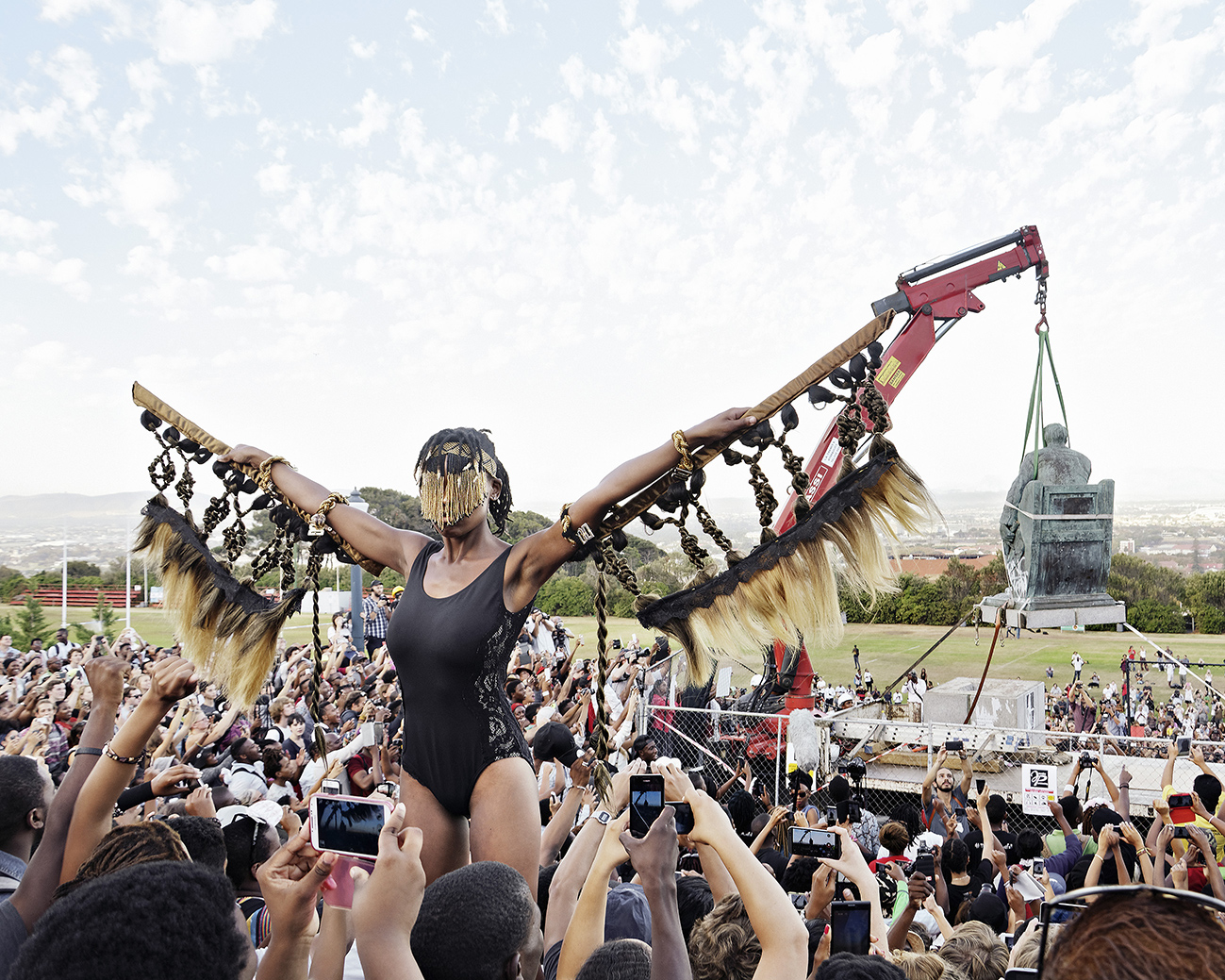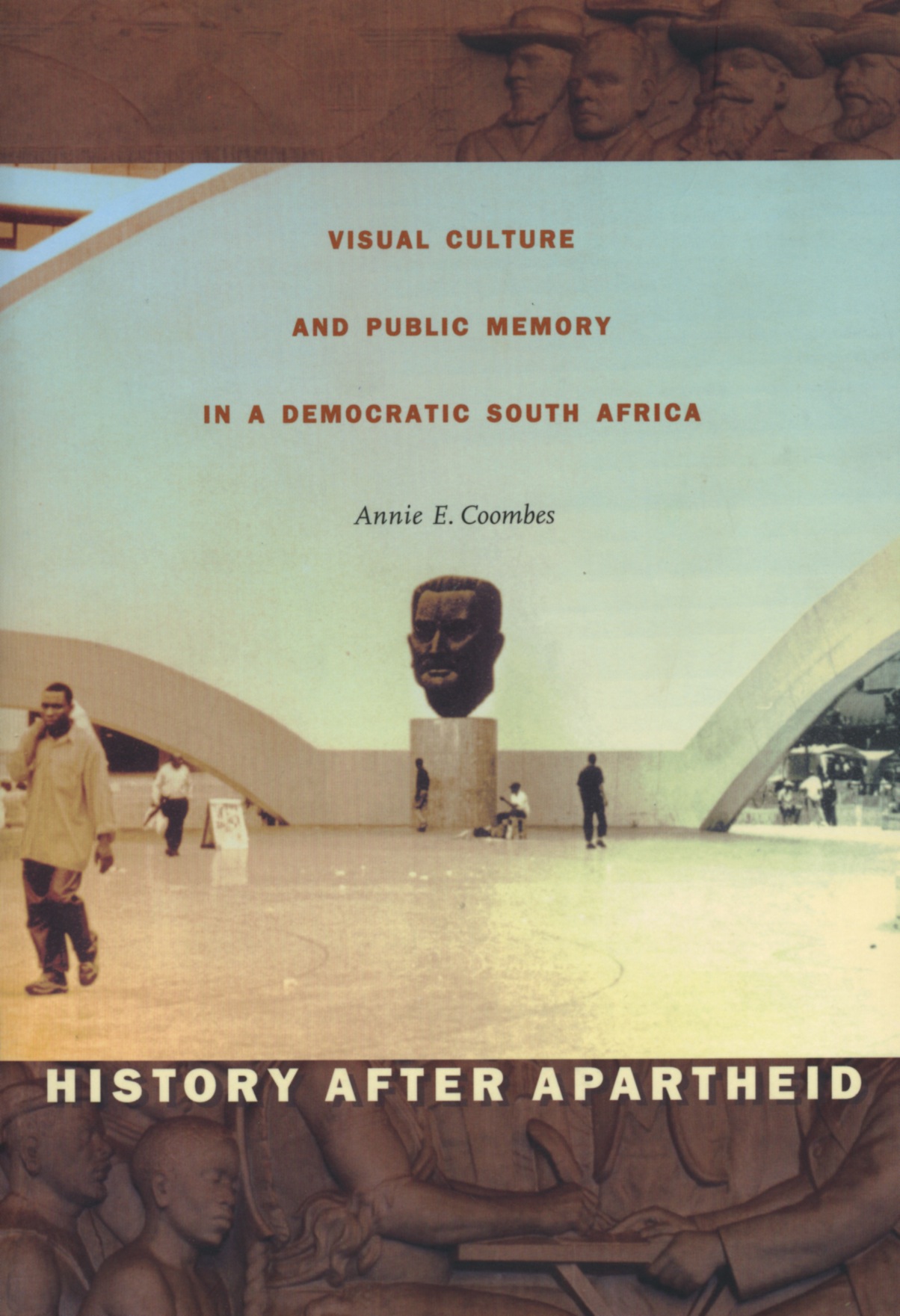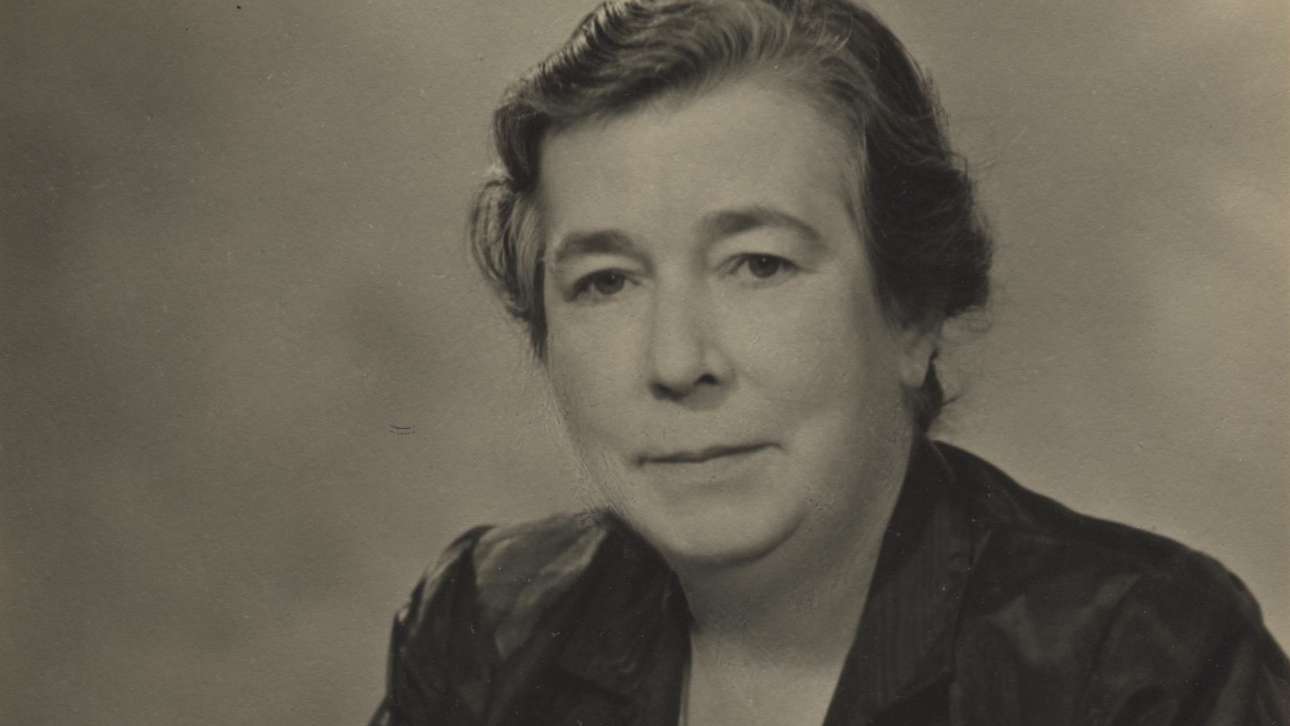Jerry White, Emeritus Professor in Modern London History, takes us on a trip down Christmas memory lane, reflecting on the College’s inception nearly two hundred years ago and considering how Christmas in 1823 might have looked.
There probably wasn’t much talk of Christmas when the London Mechanics’ Institution was founded at a famous meeting at the Crown and Anchor Tavern, Strand, on 2 December 1823. Unlike today, when Christmas shopping and advertising begins around mid-November if not before, Christmas preparations then only began in mid-December: ‘The note of preparation is now sounding through all the different places of public Amusement, to gratify the visitors to London during the festive time of Christmas,’ the Morning Post told its readers on 19 December, and little seems to have been done up to that point. The weather didn’t help this year, with much of December unseasonably warm and humid till just a day or two before the festival, with a marked ‘mildness of weather in and about London; so mild, indeed is the season, that the writer, on Sunday [the 21st], saw, in a private garden at Hammersmith, a wall-flower in blossom, out in the open grounds….’[1]
A festive marketplace
But once the great day approached then all minds were turned to how Christmas might be celebrated: ‘Probably there is no country where Christmas is more enjoyed by the community than in Great Britain’, patriotic newspapers claimed.[2] The real opening announcement of Christmas to Londoners had come a few days before with the first of two Monday ‘Great Christmas Markets’ at Smithfield, where the country’s cattle farmers paraded their best beasts for sale, knocked down to the butchers of Smithfield, Leadenhall, Newgate and Whitechapel. The markets were packed tight with cattle and sheep, driven on the hoof for weeks before; the animals had their last stop for grazing and rest in the fields of Islington to get them to market in peak condition. Once sold at Smithfield, though, ‘the crowded state of the market’ presented ‘an unusual difficulty in getting the Beast out; their heads are battered by two or three drovers at a time, and their eyes in numerous instances knocked out; and this from sheer necessity….’[3]
Beef was, indeed, the favourite food for Christmas dinner, with turkey (driven in flocks from Norfolk), geese, hams (from Yorkshire, Westmorland, even Westphalia) and mutton (for poorer families especially) also in much demand. So much roast meat could pose a problem to some. ‘There is no period probably when persons sympathize with those who have lost their grinders, more than at Christmas, when stews and wishy washy messes are excluded from the festive board, and the loss of teeth is felt as the greatest misery and affliction.’ Boiled plum pudding, though, could be enjoyed by all, the toothless included, and was a Christmas necessity. Great care was essential in getting it just right: ‘If the plum-pudding, from being too rich, should crumble or break, the misfortune never fails of agonizing and fretting the worthy hostess – all the eyes of the company are instantly and most unkindly directed towards her, as if darting reproach, to add to her embarrassment, and aggravate the calamity.’[4] Wine with dinner for the middle classes was followed by madeira, sherry and ‘good old Port’ after the pudding; in poorer households, beer or porter would have to suffice and the whole dinner might have to be taken to the baker’s shop for roasting in the bread oven, though a plum pudding could be boiled in the copper or in a pan on the range. But probably all homes could enjoy some after-dinner games: ‘hunt the slipper’ a great favourite, and ‘snap-dragon’ in richer families, which involved the unlikely pleasure of snatching almonds or sultanas and raisins from a shallow bowl of burning brandy. In all houses, churches and shop windows Christmas decorations seem to have relied mainly on branches of evergreen, especially holly, and candles, though no doubt the theatres and places of public resort were able to put on a bigger display. Mistletoe seemed a little out of fashion in 1823, no longer said to be hanging from drawing-room ceilings but ‘sent down stairs’ to the kitchen ‘for the benefit of rubicund cooks and rosy house-maids.’[5]
Christmas presents were no doubt personal and varied, just as now. Diaries and ‘illuminated pocketbooks’ were much in demand if the advertisers were to be believed, like ‘Friendship’s Offering; or, The Annual Remembrancer: a Christmas Present and New Year’s Gift for the Year 1824’, at a whacking 12 shillings. Dancing at Christmas was all the rage and many advertisements were directed at helping people look their best: Mrs Bell, of 52 St James’s Street, offered a ‘variety of novel and beautiful millinery, Head Dresses of almost every description, Ball and Evening Dresses’, as well as her ‘Patent Corsets, unrivalled and universally admired’; W. Rowe, at the Magasin de Nouveautes, 72 Oxford Street, offered an ‘assortment of Trinkets’, ‘just received from Paris’ and ‘adapted for Christmas present,’ like bead purses, red mohair bracelets, bone fans plain and painted, ornamental combs and much else; ‘Rowland’s Macassar Oil’ guaranteed ‘a beautiful arrangement of the Human Hair,’ for ‘the Youth of both Sexes … “To dance on the light fantastic toe”’; and music publishers offered fresh arrangements for solo piano and duets as Christmas presents, like Boosey & Co’s new editions of Rossini and Mozart operas, ‘with Italian words’. And there were Christmas foods on offer as presents, some exotic and reflecting London’s reach as the centre of world trade, like ‘Muscatels, in boxes; new Jordan Almonds … Spanish Grapes, very fine Normandy Pippins in baskets, Guimaraen or Portugal Plums, fine New Smyrna Figs in small drums,’ and much more from Hickson & Co’s Foreign Fruit Warehouse at 72 Welbeck Street.[6]
Dancing and riotous behaviour
Dancing could be everywhere, not just in the homes of the middle classes and above, and could no doubt spill into the streets, which were at their liveliest at Christmas. Perhaps this was the cause of ‘an unusual number of dissolute women brought before the [Bow Street] Magistrates yesterday morning from the watch-houses, charged with riotous behaviour in the public streets on the preceding night [the 23rd]. They pleaded the season in their defence. They had only indulged in a little Christmas festivity. The Magistrates told them that no season could justify drunken riots in the streets; and sent two of the most obstreperous among them to spend their holydays [sic] in Tothill-fields Bridewell – Mary Baskerville for one month, and Ann Davis for fourteen days.’[7] The streets had other dangers too. For a day or two before the 25th, apprentices, artisans of one kind or another and shop assistants would go house-to-house soliciting pennies and sixpences for their ‘Christmas boxes’. This year the ‘housekeepers in and around the metropolis are cautioned against a set of men who go about in the assumed character of Bow-street Patrol, soliciting Christmas Boxes. It is proper that it should be known such persons are impostors, and that the Bow-street Patrol are strictly prohibited from soliciting Christmas Boxes and are liable to be dismissed their situation if it be known that they do so.’[8]
Christmas boxes were one indication that charity was then as now one of the defining characteristics of Christmas, publicly lauded in the press and from the pulpit. Charity sermons were preached everywhere, with particular sections of the deserving poor in view, or for the benefit of charitable institutions like the Magdalen Hospital for ‘rescuing fallen women’, or the Asylum for Female Orphans, both in south London. There was an unusual Christmas tradition in a fast-growing part of west London where every year ‘according to annual custom, a large quantity of bread and cheese was distributed at Paddington Church amongst the poor by tickets; the assemblage was immense: until within these last three years the custom was to throw it in baskets full [sic] cut into square pieces from the belfry of the Church amongst the crowd, but owing to the confusion and many accidents occasioned by the scramble, that custom was abolished and the present mode substituted in its stead.’ This was paid for by an endowment from ‘two old maiden sisters (paupers), who travelling to London to claim an estate, in which they afterwards succeeded, and being much distressed were first relieved at Paddington on that day.’[9] The sisters were luckier than some in London that Christmas of 1823. At Marlborough Street Police Court on Christmas Eve, an ‘elderly woman, who stated that she had scarcely tasted food for the two last days’ told the magistrates that the St Pancras relieving officer had denied her relief until her case went before the guardians of the poor, who would now only meet after Christmas. The magistrate ordered that she be given temporary relief, presumably in the workhouse, until the committee should meet.[10]
Pantomimes and Christmas cheer
Of all the pleasures of Christmas 1823 it was the London theatres who offered the richest dose of Christmas cheer. Pantomimes then began on Boxing Day and ran into the early New Year. Very few opened in the run-up to Christmas, in contrast to today’s extended festival, now often beginning at the start of December. But on Boxing Day the theatres – even the grand Theatre Royal, Drury Lane – let their hair down. This year there were Harlequin and the Flying Chest (Drury Lane), Harlequin and the House that Jack Built (Covent Garden) where the action travelled from the London parks to the Tuileries in Paris and back again, Fox and Geese, or Harlequin the White King of Chess (Surrey Theatre, Blackfriars Road), Harlequin’s Christmas-box, or the London Apprentices (Olympic Theatre, Wych Street, Strand), and Doctor Faustus and the Black Demon, or Harlequin and the Seven Fairies of the Grotto (Adelphi, Strand). At the last, all did not go according to plan. Despite ‘some pretty scenery’ and ‘a lively Clown and Columbine’, the pantomime ‘tried the patience of the audience severely through a number of scenes, throughout the whole of which there were not three clever tricks, and those that were attempted were for the most part bungled…. Good humour, however, which had more than once … begun to give way, was completely revived by the introduction of a panoramic view of the British fleet under Lord Exmouth bombarding the town of Algiers, which … was warmly applauded.’[11] The patriotic fervour of a London theatre audience was a sight to behold long before ‘Jingoism’ was ever invented.
By the time the London Mechanics’ Institution opened its first premises at Southampton Buildings, Holborn, late in 1824, this first Birkbeck Christmas was just a faint memory. Among those founders at the Crown and Anchor that December, who would have thought that another 200 Christmases would be celebrated with Birkbeck still providing adult education in London that is second to none?
[1] Morning Herald, 23 December 1823
[2] Morning Advertiser, 25 December 1823
[3] Cobbett’s Weekly Register, 20 December 1823
[4] Morning Advertiser, 25 December 1823
[5] Sunday Times, 28 December 1823
[6] Morning Post, 22 December 1823 (capitalisation simplified) and Bell’s Weekly Messenger, 22 December 1823 (macassar oil)
[7] Morning Herald, 24 December 1823
[8] Morning Post, 25 December 1823. The Bow Street Patrol were a small force of police run by the Bow Street magistrates, before the formation of the blue-uniformed Metropolitan Police in 1829.
[9] New Times, 23 December 1823
[10] Public Ledger and Daily Advertiser, 25 December 1823
[11] The Times, 27 December 1823


